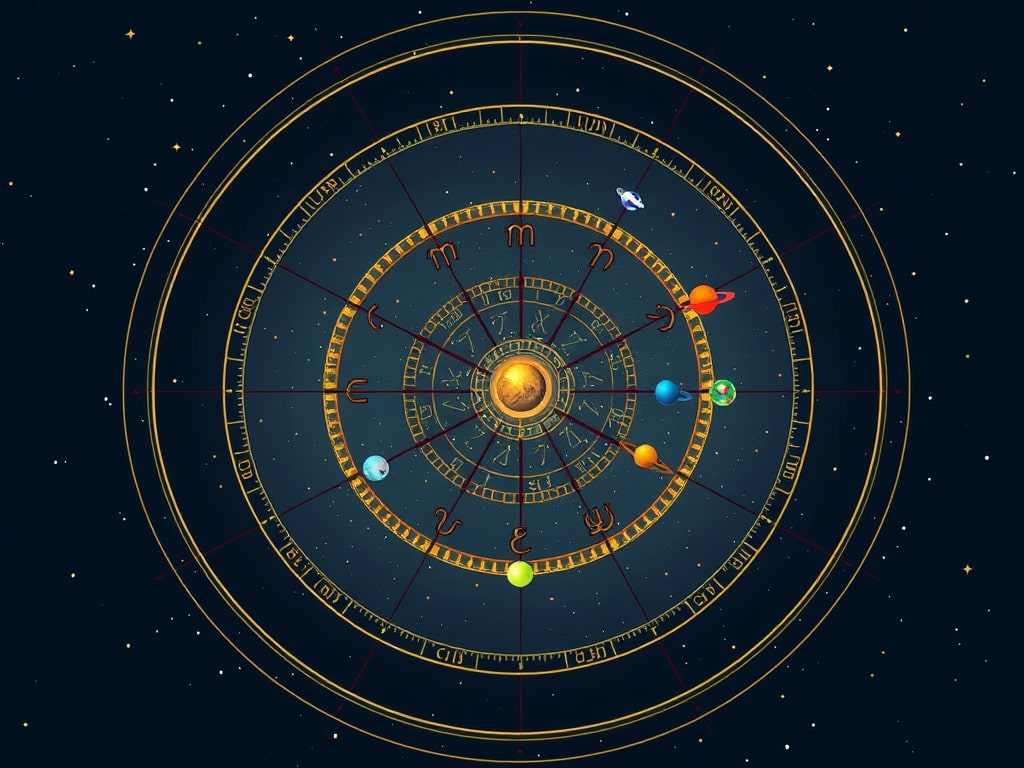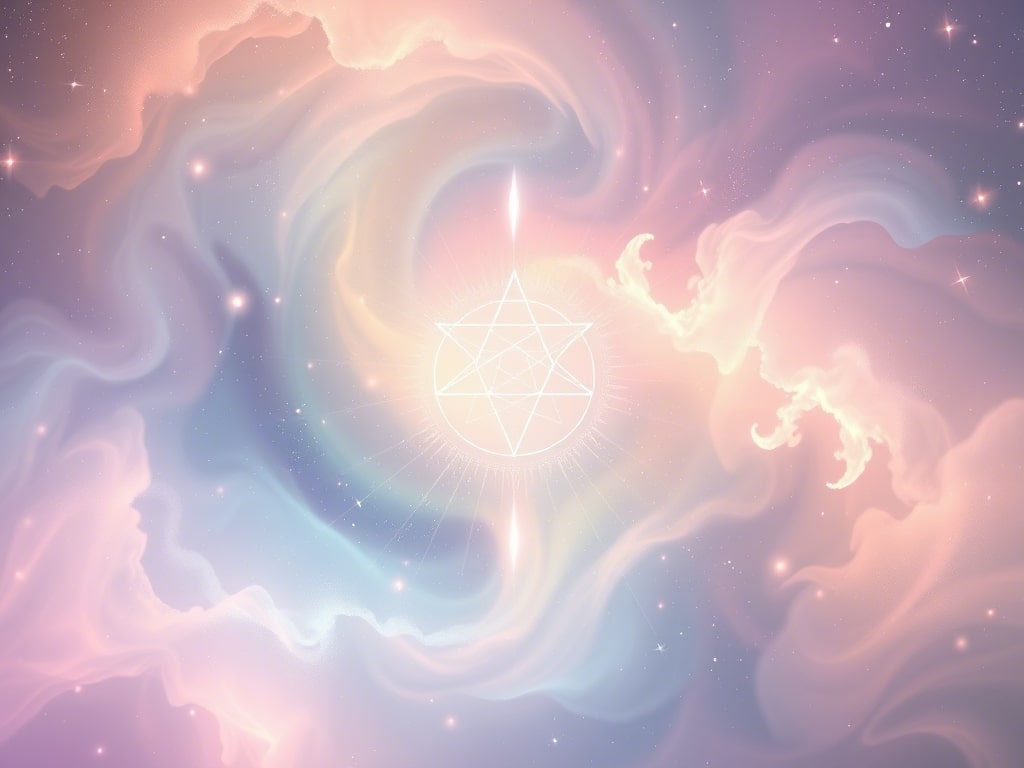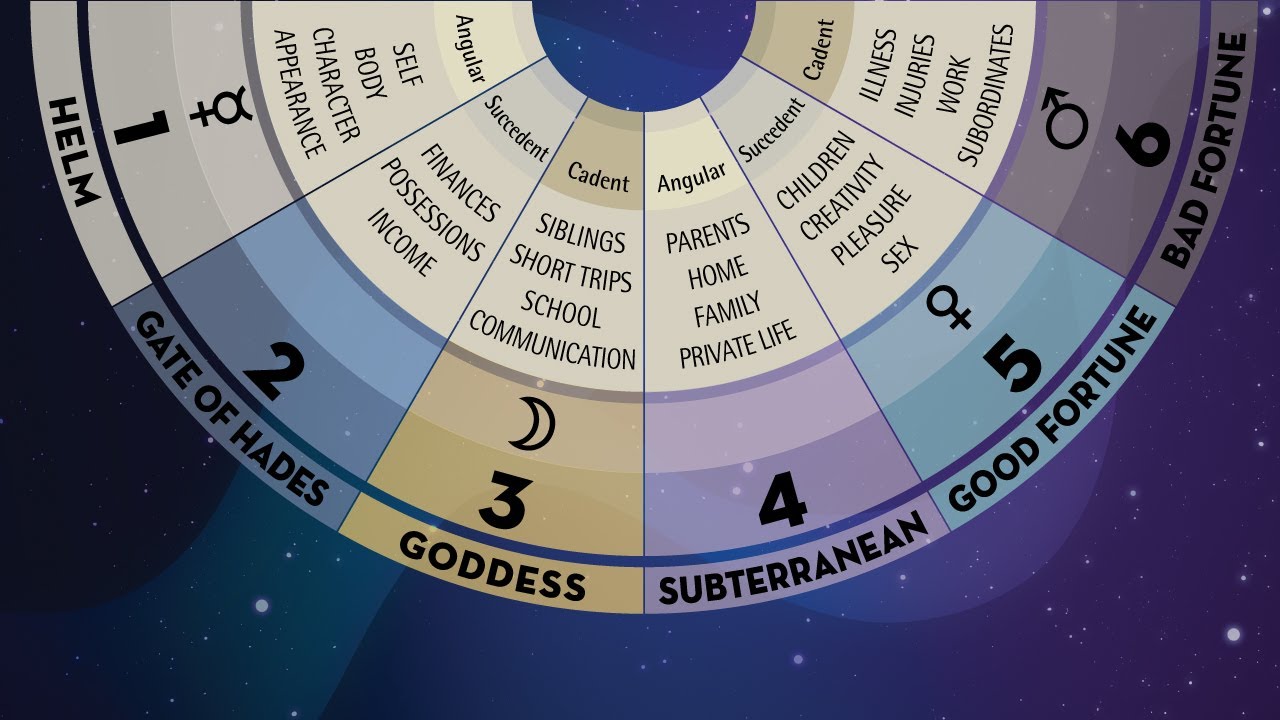Understanding Aspects in Astrology: The Planetary Conversations
In astrology, aspects are the angular relationships between planets that reveal how different parts of your psyche interact. These cosmic conversations show which energies in your chart flow harmoniously together and which create dynamic tension. Understanding aspects adds depth and nuance to birth chart interpretation, revealing the complex interplay of forces that shape your personality and life experience.

The Language of Planetary Relationships
If planets represent different facets of your personality and signs show how these energies express themselves, aspects reveal how these various parts of you interact and communicate with each other. They are the dynamic relationships that create the unique symphony of your psyche.
Aspects are measured by the angular distance between two planets as viewed from Earth. These angles create specific energy patterns that can be harmonious, challenging, or neutral in nature. The study of aspects is essential for understanding the complexity and nuance of a birth chart beyond the basic planet and sign placements.
When planets form aspects, their energies blend and interact in ways that either enhance each other, create tension, or stimulate growth. These relationships form the foundation of your psychological patterns, showing which parts of yourself work together naturally and which areas might require more conscious integration.
The Basics of Astrological Aspects
Aspects are categorized based on the angular relationship between planets and their effect on planetary energies:
Major Aspects: The Primary Planetary Relationships
Conjunction (0°)
When two planets occupy approximately the same position in the zodiac, they form a conjunction. This aspect creates a powerful fusion of the planets' energies, intensifying and blending their expression. Conjunctions represent areas of concentrated focus and potential in your chart.
Key themes: Fusion, intensity, focus, amplification, and new beginnings.
Opposition (180°)
When two planets are positioned on opposite sides of the zodiac, they form an opposition. This aspect creates dynamic tension and awareness between the planets' energies, often manifesting as external relationships or internal polarities seeking integration. Oppositions represent areas of balance, relationship, and perspective in your chart.
Key themes: Polarity, relationship, awareness, balance, and integration.
Trine (120°)
When two planets are positioned approximately 120 degrees apart, they form a trine. This aspect creates harmonious flow and ease between the planets' energies, facilitating natural expression and cooperation. Trines represent areas of talent, flow, and natural ability in your chart.
Key themes: Harmony, flow, ease, talent, and natural expression.
Square (90°)
When two planets are positioned approximately 90 degrees apart, they form a square. This aspect creates dynamic tension and friction between the planets' energies, often manifesting as internal conflict or external challenges that motivate growth. Squares represent areas of development, challenge, and achievement in your chart.
Key themes: Tension, challenge, growth, action, and development.
Sextile (60°)
When two planets are positioned approximately 60 degrees apart, they form a sextile. This aspect creates supportive opportunities and potential between the planets' energies, facilitating growth and development through conscious effort. Sextiles represent areas of opportunity, learning, and development in your chart.
Key themes: Opportunity, growth, learning, development, and potential.
Minor Aspects: Subtle Planetary Relationships
Quincunx/Inconjunct (150°)
When two planets are positioned approximately 150 degrees apart, they form a quincunx or inconjunct. This aspect creates an awkward relationship between the planets' energies, requiring adjustment, adaptation, and integration. Quincunxes represent areas of adjustment, refinement, and health in your chart.
Key themes: Adjustment, adaptation, refinement, health, and integration.
Semi-Sextile (30°)
When two planets are positioned approximately 30 degrees apart, they form a semi-sextile. This aspect creates a subtle connection between adjacent signs, often representing a developmental relationship between different but related areas of life. Semi-sextiles represent areas of growth, development, and subtle connection in your chart.
Key themes: Growth, development, subtle connection, and transition.
Other minor aspects include the semi-square (45°), sesquiquadrate (135°), quintile (72°), and biquintile (144°). These aspects add nuance and detail to the chart interpretation, revealing subtle patterns and potentials.
Aspect Patterns: Complex Planetary Relationships
When multiple aspects combine in specific configurations, they create aspect patterns that represent complex psychological dynamics and life themes. These patterns reveal important storylines in your chart that integrate multiple planetary energies.
Grand Trine: Natural Talent and Flow
A Grand Trine forms when three planets are positioned approximately 120 degrees apart, creating an equilateral triangle in the chart. This pattern represents natural talent, harmony, and flow between the planets involved, often manifesting as gifts that come easily.
Key themes: Talent, harmony, flow, ease, and natural ability.
The Grand Trine creates a closed circuit of harmonious energy that flows easily between the three planets involved. While this pattern brings natural gifts and talents, it can also create complacency or lack of motivation due to the ease of expression. The challenge with Grand Trines is to consciously develop and utilize these gifts rather than taking them for granted.
T-Square: Dynamic Tension and Achievement
A T-Square forms when two planets in opposition both square a third planet, creating a right-angled triangle in the chart. This pattern represents dynamic tension, challenge, and the motivation to achieve through overcoming obstacles.
Key themes: Challenge, achievement, drive, tension, and focused energy.
The T-Square creates a powerful dynamic of tension that seeks resolution through the planet at the apex (the one receiving two squares). This pattern often manifests as a driving force for achievement, as the internal tension motivates action and development in the area of life represented by the apex planet and its house.
Grand Cross: Balance Through Tension
A Grand Cross forms when four planets are positioned approximately 90 degrees apart, creating a square or cross in the chart. This pattern represents intense tension, challenge, and the need to find balance and integration among competing forces.
Key themes: Balance, integration, tension, challenge, and stability through effort.
The Grand Cross creates a balanced but tense structure that can feel like being pulled in four different directions simultaneously. While challenging, this pattern creates tremendous potential for development and achievement when the tension is consciously worked with and integrated.
Yod (Finger of God): Spiritual Purpose
A Yod forms when two planets in sextile both quincunx (150°) a third planet, creating a narrow isosceles triangle in the chart. This pattern represents a special purpose or mission, spiritual challenge, and the need for adjustment and adaptation.
Key themes: Special purpose, destiny, adjustment, crisis, and spiritual growth.
Working Consciously with Transits
Understanding the nature and timing of transiting aspects allows you to work more consciously with these energies rather than experiencing them as random external events. Each transit brings specific lessons and opportunities for growth, even when challenging.
During harmonious transits (trines and sextiles), take initiative to maximize the opportunities presented. During challenging transits (squares and oppositions), practice patience, self-awareness, and constructive engagement with the issues that arise. All transits, regardless of their nature, represent important phases in your ongoing development and evolution.
Frequently Asked Questions About Aspects in Astrology
Which aspects are most important in a birth chart?
While all aspects contribute to your astrological profile, certain aspects tend to have more significant influence: 1) Aspects to personal planets (Sun, Moon, Mercury, Venus, Mars) and the Ascendant, 2) Aspects with tight orbs (closer to exact), 3) Aspects that form part of larger patterns like T-Squares or Grand Trines, and 4) Aspects involving the chart ruler (ruler of the Ascendant). Major aspects (conjunction, opposition, trine, square, sextile) generally have stronger effects than minor aspects.
Are challenging aspects bad in a birth chart?
Challenging aspects (squares, oppositions) aren't "bad" but rather represent areas of dynamic tension that motivate growth and development. These aspects often correlate with your greatest achievements and strengths because they create the internal friction necessary for growth. Many successful people have charts dominated by challenging aspects that provided the drive and determination to overcome obstacles. Without some challenging aspects, a chart might lack the necessary tension for achievement and development.
How do I know which aspects I have in my chart?
To identify the aspects in your birth chart, you'll need your complete birth data (date, time, and place) to generate an accurate chart. Most online astrology calculators will automatically calculate your aspects and display them in an aspect grid or table. The aspects are typically shown with symbols (☌ for conjunction, △ for trine, □ for square, etc.) and the orb (exactness) of each aspect. Professional astrological software provides more detailed aspect analysis, including minor aspects and aspect patterns.
Can aspects change or develop over time?
The aspects in your natal chart remain fixed throughout your life, as they represent the planetary positions at your birth moment. However, your relationship to these aspects and how you express them can evolve significantly through conscious awareness and personal growth. Additionally, progressed charts and transits create temporary aspects that activate and develop your natal potential at different life stages. Through psychological and spiritual development, you can learn to express the higher potential of challenging aspects and consciously utilize the gifts of harmonious aspects.
How do aspects affect compatibility between two people?
In relationship astrology (synastry), aspects between two people's charts reveal the dynamic interplay between their personalities. Harmonious inter-chart aspects (trines, sextiles) create ease and flow between the individuals, while challenging aspects (squares, oppositions) create dynamic tension that can either motivate growth or cause conflict. Conjunctions create powerful connections, either harmonious or challenging depending on the planets involved. The most enduring relationships typically have a balance of harmonious and challenging aspects, creating both comfort and growth potential.


